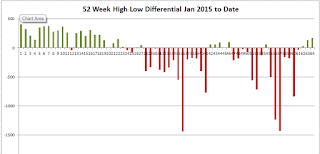The Don't List
- Don't Sell for tax reasons.
- Don't base your selling decision on how much the stock is yielding.
- Don't hold onto a stock because the price/earnings (P/E) ratio is low.
- Don't sell a stock simply because the P/E is too high.
- Don't average down in a negative situation. Professionals average up, not down.
- Don't refuse to sell because the overall market trend is bullish.
- Don't wait for the next rally to sell.
- Don't hold onto a stock simply because it is of high quality.
The Do List
Use Protective Stop-Loss orders
Increased volatility in the market makes this tactic very important. Swings occur very quickly and a stop-loss can protect your position if a stock moves down quickly. A stop-loss sets the price at which you want to place a sell order. For example, if a stock is selling at $30 and you set your stop-loss at $25, the stock won't sell unless the prices moves to $25 or lower. I find stop-loss orders bring me peace
of mind because I can go about my day without worrying about whether I
am protected. There is no need to watch the market all day.
Setting the Stop-Loss Order
Set the initial Stop-Loss when entering position
When buying a stock, set your initial stop-loss order amount. You should always know your exit point when entering into a position. Use the prior support level to set your first stop. Set the stop just above the prior support level.
Subsequent Stop-Loss Settings
If your stock purchase has turned into a winner, set subsequent stop-loss orders. In both cases, you should move your stop-loss up as the stock advances and sets new floors.
- Investors (long term) - set just below the 30 week moving average.
- It is okay if the stock slightly breaks the 30 week moving average as long the moving average is sloping up.
- Note there can be some stiff pull-backs if you are in for the long haul.
- Get out of the stock if the 30 week moving average starts to slope down.
- Traders (short term) - set just below the prior bottom which might be above the 30 week moving average.
- Set the first stop closest to the prior floor. If there isn't one, set it to 4%-6% below.
- Do not pay attention to corrections less than 7%.
- Get out if the 30 week moving average starts to slope down.
- Take profits on the way up if your stock moves up very quickly and becomes overextended, i.e. far above the 30 week moving average.

















